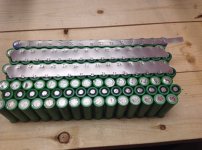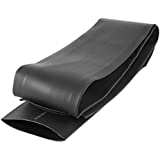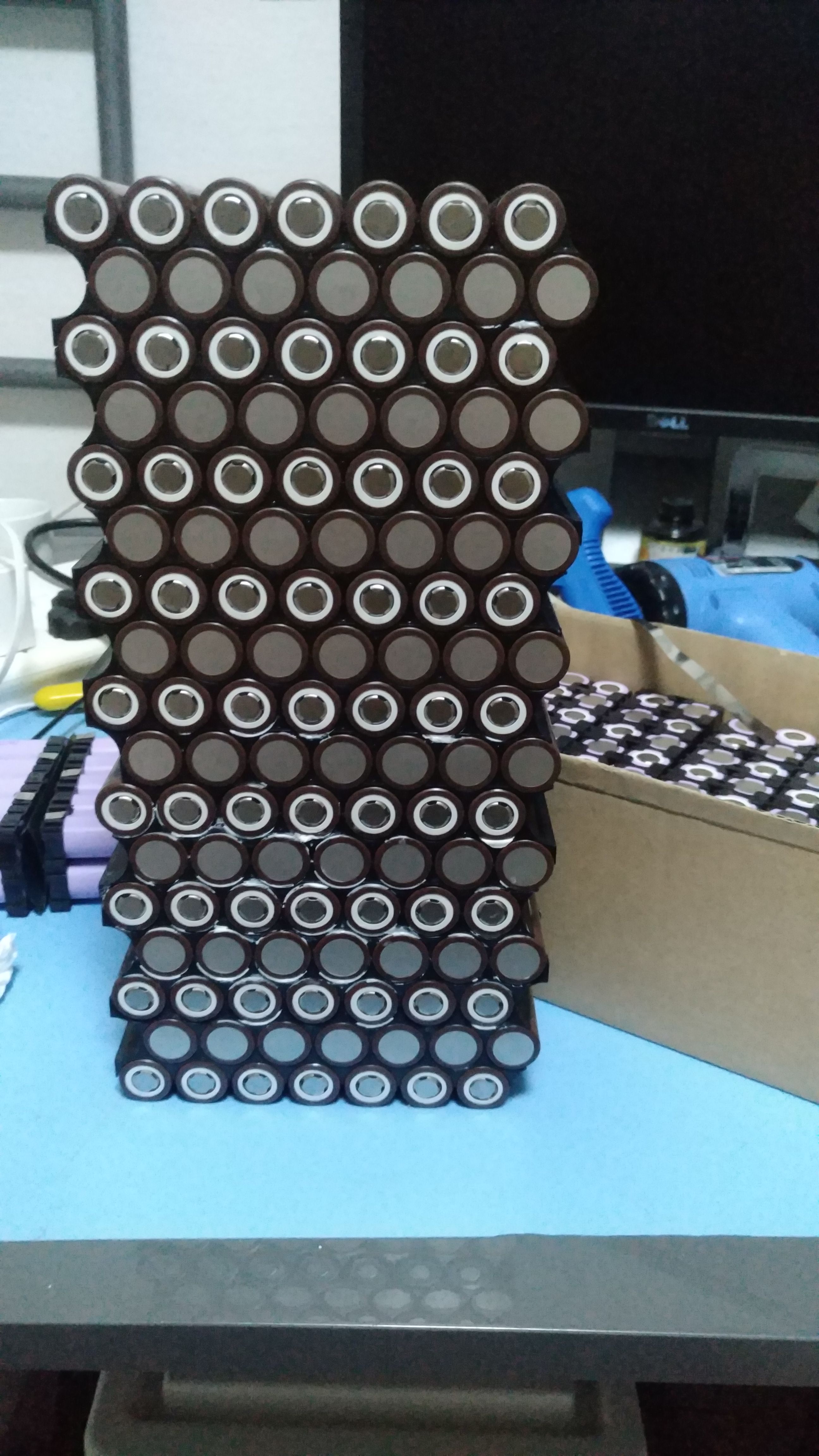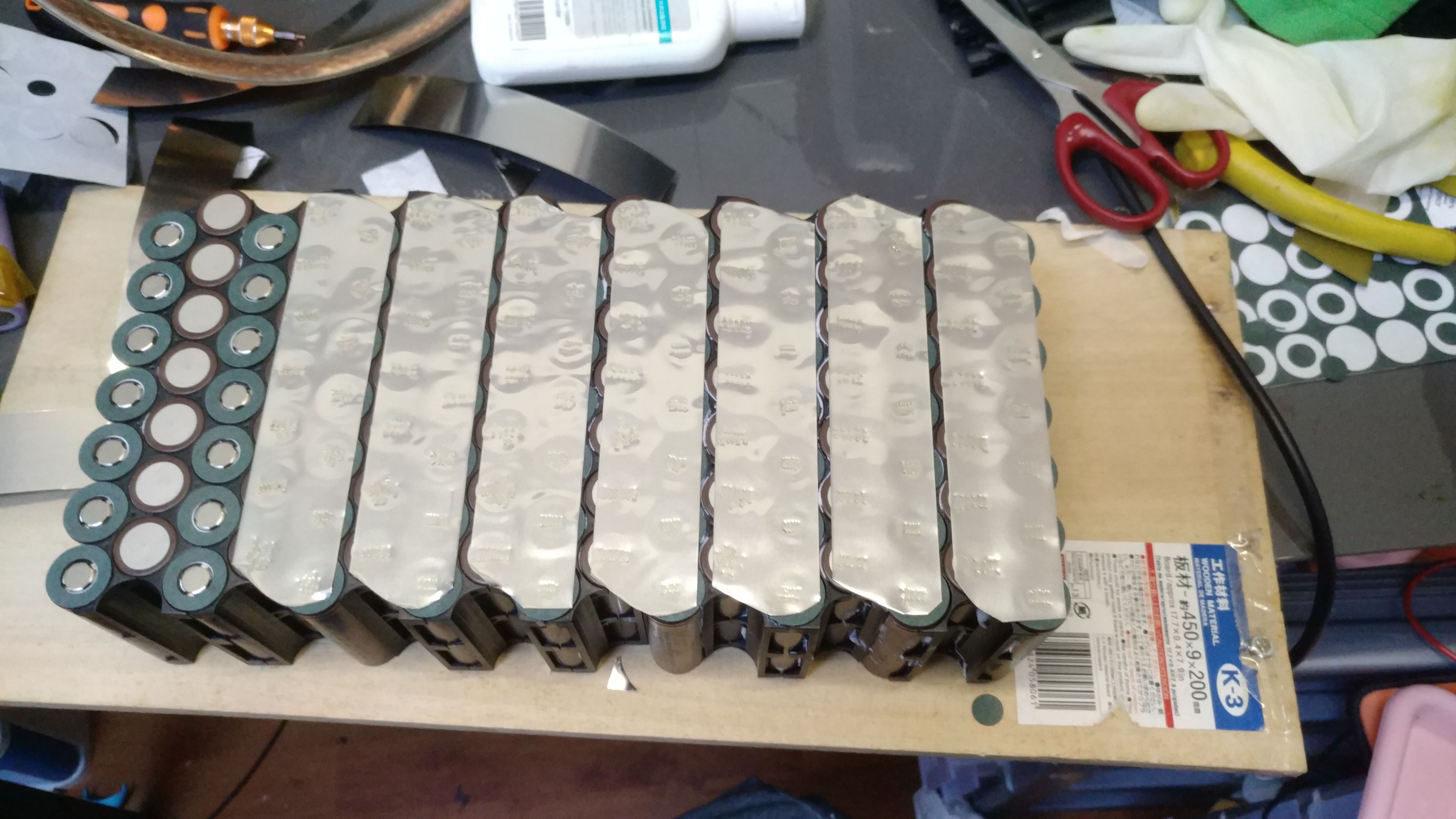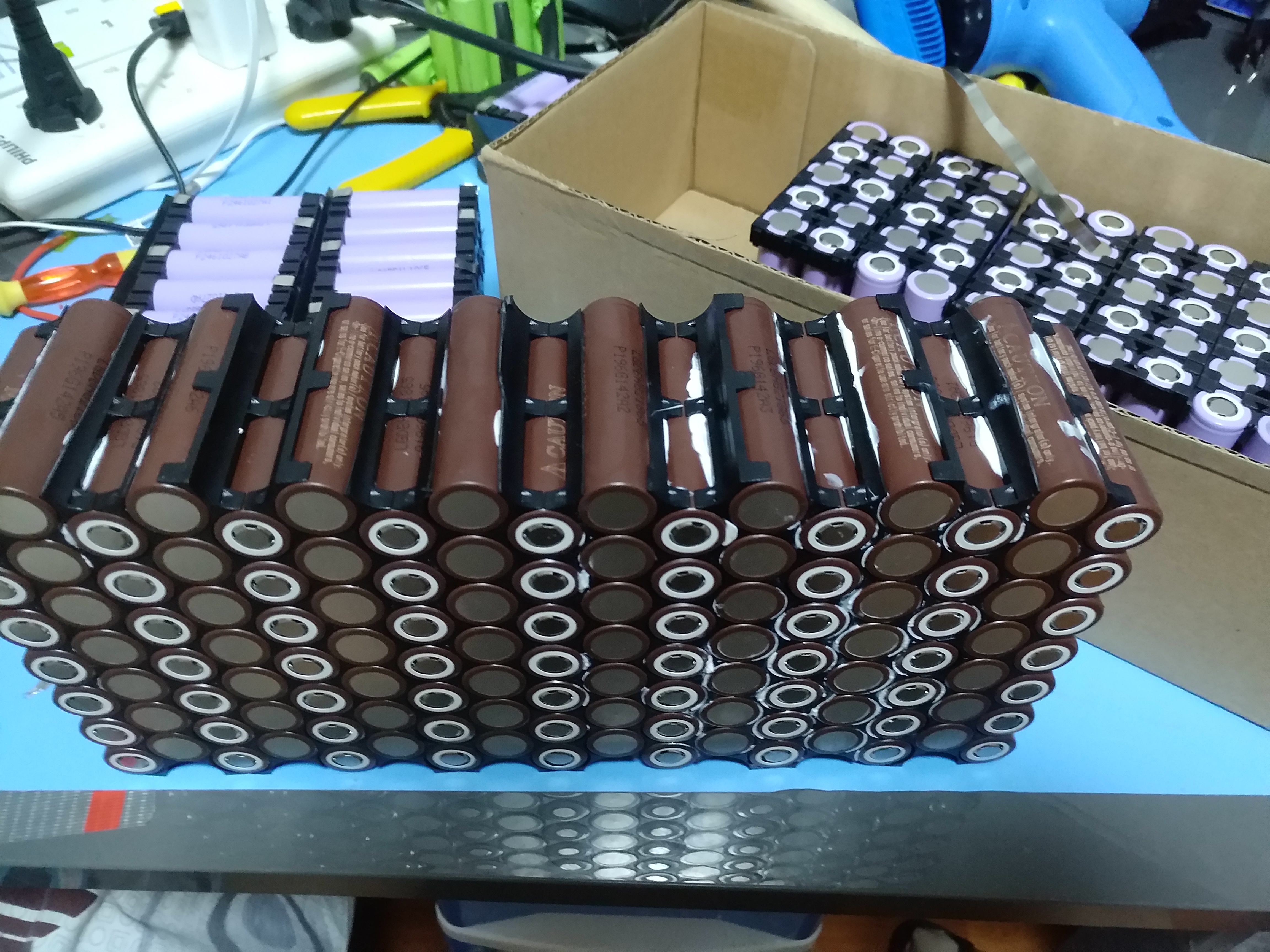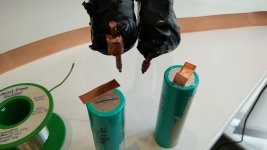My pack build is coming along nicely.

However, I would not recommend doing any spot welding in any location that is not situated directly over the cell top/bottom.
I misunderstood how a spot welder works and thought the pulse would only penetrate the top and next layers...i.e. 2 layers of nickel would leave whatever was underneath unaffected. This is not the case


Instead, it appears that the pulse penetrates deeper. I saw the paper insulation rings char and burn slightly and also the heat shrink vaporise, before I stupidly tried welding between a spot on the cell bottom and a point with nothing underneath it...then this happened:
[youtube]C_FC4XTzx74[/youtube]
I'm lucky it wasn't on the positive side or it could have been a lot worse.
It's hard to see from the video, but it actually completely blew the nickel strip apart at the cell edge leaving no link at that point. You can see the charred mark on the heat shrink in these photo's taken after I fixed it.


As you can see above I was able to fix it by welding another strip over the top. Anyway, I was planning on having a few 5P blocks made up as spares for my 12S5P pack and this will be one of them...unless I change my mind and make it 14S5P.
As you can see from my first photo, I didn't make the rest of my parallel blocks with just one link and instead opted for 2 links on either side. I'm sure you could make a single link configuration work you welded it to the middle of the 2 cells nickel strip FIRST, before placing it on the cells and welding all the rest.
Anyway, hope others can learn from my mistake.
Cheers

However, I would not recommend doing any spot welding in any location that is not situated directly over the cell top/bottom.
I misunderstood how a spot welder works and thought the pulse would only penetrate the top and next layers...i.e. 2 layers of nickel would leave whatever was underneath unaffected. This is not the case
Instead, it appears that the pulse penetrates deeper. I saw the paper insulation rings char and burn slightly and also the heat shrink vaporise, before I stupidly tried welding between a spot on the cell bottom and a point with nothing underneath it...then this happened:
[youtube]C_FC4XTzx74[/youtube]
I'm lucky it wasn't on the positive side or it could have been a lot worse.
It's hard to see from the video, but it actually completely blew the nickel strip apart at the cell edge leaving no link at that point. You can see the charred mark on the heat shrink in these photo's taken after I fixed it.


As you can see above I was able to fix it by welding another strip over the top. Anyway, I was planning on having a few 5P blocks made up as spares for my 12S5P pack and this will be one of them...unless I change my mind and make it 14S5P.
As you can see from my first photo, I didn't make the rest of my parallel blocks with just one link and instead opted for 2 links on either side. I'm sure you could make a single link configuration work you welded it to the middle of the 2 cells nickel strip FIRST, before placing it on the cells and welding all the rest.
Anyway, hope others can learn from my mistake.
Cheers














